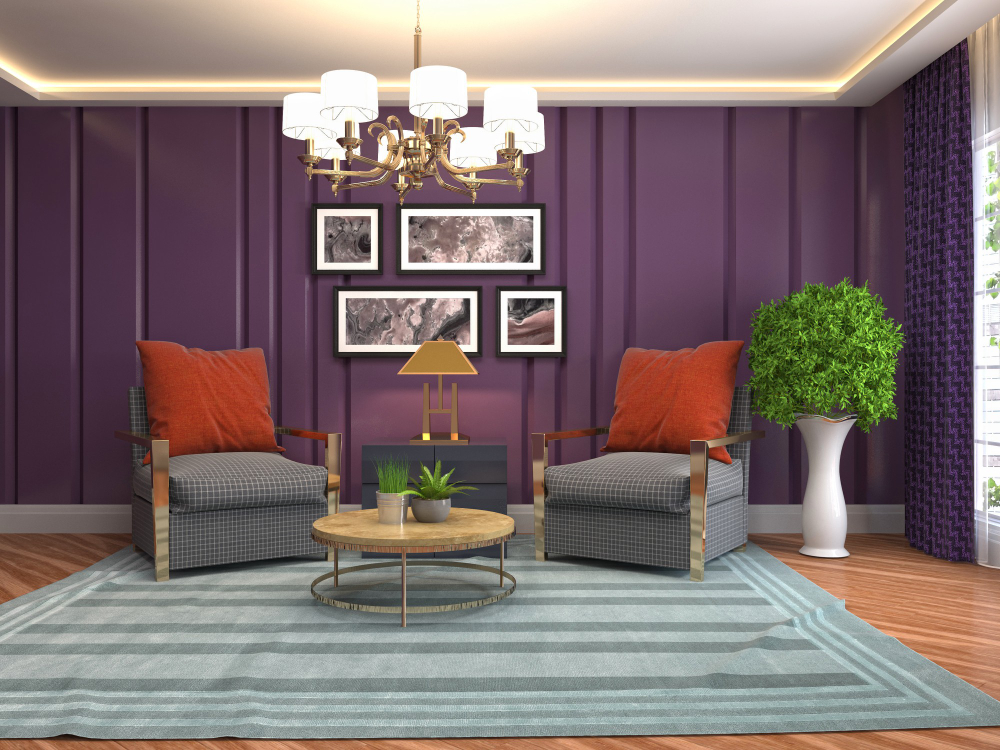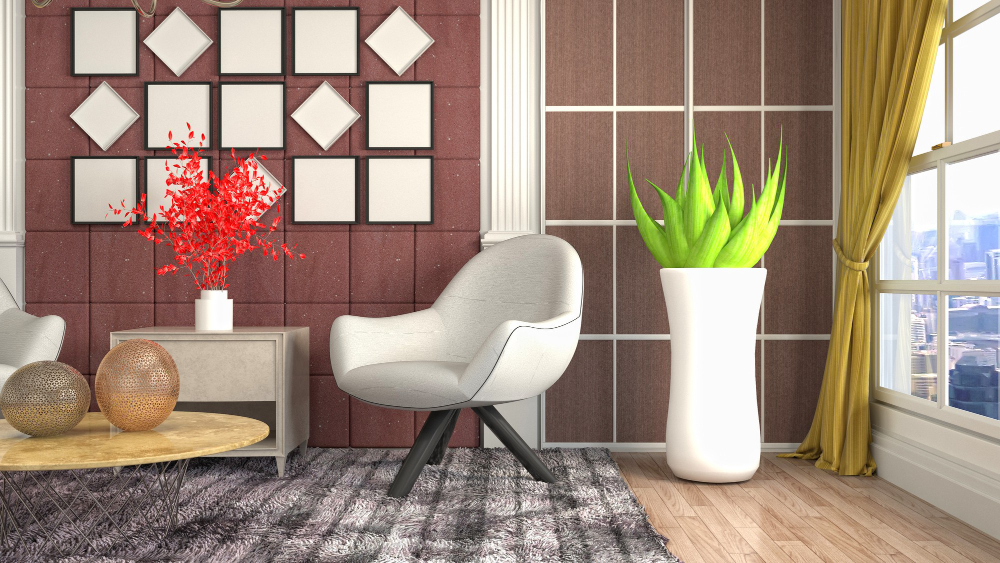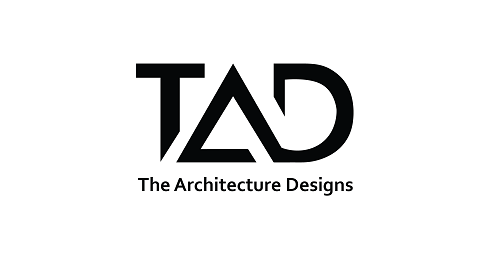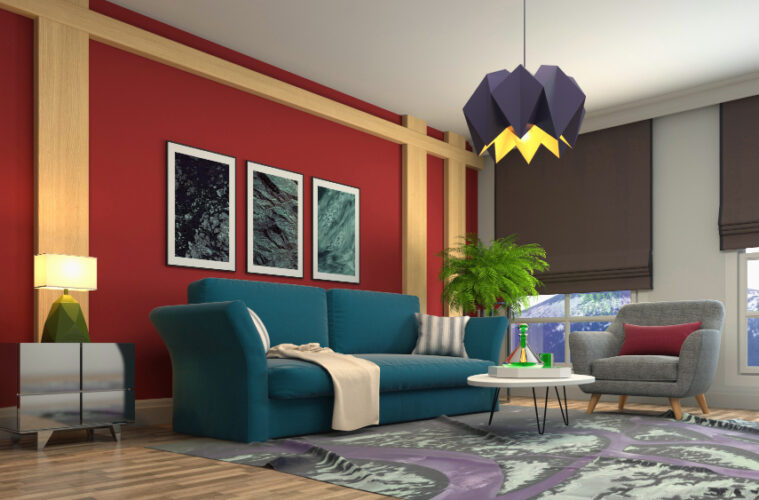Most people see home decor as something purely visual—paint colours, furniture, lighting. But truly smart design goes beyond looks. The best choices transform how you live in a space, reduce stress, improve functionality, and even increase the long-term financial value of your property.
Whether you’re upgrading your current home or styling a new one, the secret is to blend aesthetics with timeless, functional features that will still appeal to buyers years from now. Let’ s break down the trends, improvements, and psychological elements that make your home both stunning today and valuable tomorrow.
Why Home Decor Is More Than Just Aesthetic Styling
A well-designed home affects more than your eyes—it shapes your mind, your habits, and your property’s market appeal.
● Psychological Comfort: Studies in environmental psychology show that humans
respond positively to natural light, uncluttered layouts, and earthy textures. A calm environment helps you recharge, boosting both productivity and relaxation.
● Buyer Perception: Potential buyers often make judgments within the first few minutes of entering a property. If the home feels warm, modern, and well-kept, it creates an emotional attachment. Buyers may overlook flaws if the “vibe” feels right.
● Durability & Value: Decor trends that fade quickly (e.g., neon accent walls or over- themed rooms) can drag down resale value. But timeless upgrades—like quality flooring or built-in storage—signal lasting value.
Think of home decor not just as “what looks nice,” but as a long-term investment strategy. Each design decision should ask: Does this make my daily life better, and will someone else pay more for this in 5–10 years?
Trending Upgrades That Wow Today and Pay Off Tomorrow
Lighting is often called the “jewellery” of the home. A sculptural chandelier above a dining table, layered task lighting in the kitchen, or minimalist pendant lamps instantly elevate the mood of a room. But beauty aside, the choice of energy-efficient LEDs and smart dimmers ensures these upgrades aren’t just pretty—they’re practical.
From a psychological perspective, lighting shapes emotion. Warm dimmable lights make bedrooms and living rooms relaxing, while bright white task lights improve focus in kitchens and study areas. This adaptability means your home feels “designed with intention,” which subtly impresses visitors and future buyers.
On the financial side, modern LED and smart lighting lower energy bills, which adds to long- term savings. More importantly, buyers increasingly look for homes with integrated, stylish lighting because it saves them renovation hassle. That combination of wow factor + efficiency makes statement lighting one of the highest-impact, low-maintenance upgrades.
2. Textured Walls and Natural Finishes
Smooth painted walls are clean, but they rarely add depth. That’s why textured
finishes—limewash paint, Venetian plaster, reclaimed wood panelling, or stone cladding—are rising in popularity. They bring visual warmth and tactile richness, making a room feel lived-in yet sophisticated.
Psychologically, textures tap into our instinctive comfort with natural materials. A stone backsplash in the kitchen or a wood-panelled feature wall in the living room connects us to nature, creating a calming, grounded feeling.
For long-term value, natural finishes age gracefully. Unlike trendy wallpapers or bold accent colours that may date quickly, wood, stone, and plaster patina beautifully over time. Buyers recognise the quality of these materials, and a home that already has them often commands a premium because it looks “upgraded” without requiring further work.
Pro Tip: Use natural textures sparingly—one statement wall or ceiling is enough. Overuse can overwhelm, but the right touch adds sophistication and timelessness.
3. Open Shelving That Shows Intentional Living

The psychological benefit is subtle but powerful: open shelving nudges you to curate and keep clutter under control. Instead of hiding away mismatched mugs, you choose pieces that complement your space, creating harmony. This makes the home feel “well-organised,” which future buyers will subconsciously interpret as “well-maintained.”
From a value perspective, open shelving creates the perception of larger, airier rooms—a trick especially useful in smaller apartments. Buyers often equate open, styled shelving with higher- end, designer homes. It’s a relatively affordable change that can significantly increase appeal during resale.
4. Indoor-Outdoor Connections
Urban living often feels boxed in, which is why homes that blur the line between indoors and outdoors stand out. Sliding glass doors to a balcony, a small herb garden in the kitchen, or even a living wall indoors instantly make a home feel larger and fresher.
Humans have an innate connection to nature (biophilia). Indoor greenery reduces stress, improves air quality, and makes spaces feel vibrant. Natural light pouring through large windows enhances mood and lowers electricity bills.
From an investment standpoint, homes that maximise natural light and include some greenery generally fetch higher prices. Buyers in cities crave “space,” and even the illusion of it—through greenery and extended views—translates into perceived value. Developers know this, which is why showflats often highlight indoor-outdoor elements.
Practical Improvements That Enhance Function and Resale
Hidden Storage That Blends with Design
One of the biggest pain points for homeowners is clutter. Built-in cabinetry that are flush with walls, painted in neutral shades, or designed as hidden compartments helps to keeps things out of sight while maintaining sleek interiors.
The psychological benefit is immediate: less visible clutter equals less mental stress. A tidy environment makes people feel more relaxed and in control.
Financially, buyers love storage. In fact, ample built-in storage can be a deciding factor in resale, especially in compact apartments. It saves new owners from having to install their own carpentry, making your home “move-in ready.”
Multi-Functional Furniture
As homes get smaller, every piece of furniture needs to work harder. Think extendable dining tables that seat eight when needed, ottomans with storage, or Murphy beds that fold away. These choices add flexibility without sacrificing aesthetics.
Psychologically, versatile furniture creates a sense of adaptability—you’re not constrained by your square footage. Hosting guests, working from home, or even rearranging for a new season becomes seamless.
Long-term value comes from perceived spaciousness. A compact home with clever furniture feels larger and more functional, which raises its appeal to young buyers who value flexibility.
Smart Features That Blend into Decor

The lifestyle benefit is convenience. You get to control your environment with ease. Psychologically, it also conveys “modern living,” which makes residents feel ahead of the curve.
Financially, future buyers, especially younger ones, will expect smarter features. A home that already integrates them saves new owners the cost of installation. It becomes not just attractive, but future-proof.
Timeless Design Choices That Hold Value
Neutral Palettes with Accent Flexibility
Colour trends come and go, but neutral foundations like whites, greys, taupes, never tire. The trick is to layer them with accents like cushions, rugs, or artwork, which can be swapped easily.
For homeowners, neutrals create calm and flexibility. For buyers, they make it easy to visualise their own belongings in the space. This “blank canvas” effect removes a psychological barrier to purchase.
Homes with timeless palettes typically sell faster because they don’t polarise buyer taste. That’s long-term value in action.
Quality Flooring
Flooring covers every room, making it one of the most impactful investments. Hardwood, engineered timber, or high-quality vinyl look luxurious and last for decades.
The daily benefit is tactile comfort. Walking barefoot on solid wood feels entirely different from stepping on low-grade laminate. Buyers immediately notice this “quality underfoot.”
Long-term, durable flooring avoids costly replacement cycles. During resale, homes with quality flooring signal “premium build,” often commanding higher prices.
Kitchens and Bathrooms
If there are two rooms that sell homes, it’s the kitchen and bathroom. Even modest upgrades such as quartz countertops, matte fixtures, under-mount sinks, floating vanities, elevate these spaces into “luxury zones.”
These rooms have a disproportionate impact on buyer decision-making. A stylish kitchen suggests a home that’s been modernised and cared for. A spa-like bathroom feels indulgent, increasing emotional attachment.
In resale terms, upgrades in these areas often yield the highest ROI of any
renovation—sometimes up to 70–80% return.
Financing Smart Home Upgrades
While design pays off long-term, upgrades can strain short-term budgets. Instead of overextending savings, homeowners can align renovation spending with their mortgage planning.
Using a mortgage home loan calculator allows you to simulate how additional renovation costs
fit into your monthly repayments. By seeing the numbers clearly, you can decide whether to
prioritise flooring upgrades, built-in cabinetry, or smart lighting. All without risking your long-term
financial stability.
This way, you’re not just decorating your home. You’re strategically investing in its future value
while keeping your finances balanced.
Final Thoughts
Beautiful homes aren’t just about Instagram-worthy shots. The real magic happens when design, psychology, and financial value intersect.
● Lighting, textures, and indoor-outdoor elements wow today.
● Built-in storage, smart features, and quality flooring add everyday function.
● Neutral palettes, kitchens, and bathrooms protect long-term value.
When done right, every upgrade is more than decor—it’s an investment. You’ll enjoy a more comfortable, stylish lifestyle now, while ensuring your property stays competitive and desirable in the years to come.



